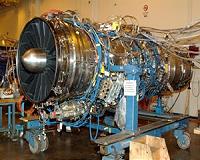 |
Bonn, Germany (SPX) Apr 27, 2011 The flight of birds is still largely unexplored; in particular, the movements performed during the beat of a wing and the airflow around the wing remain a puzzle to scientists. The German Aerospace Center, in collaboration with RWTH Aachen University and the German Armed Forces University in Munich is addressing this question. Starting on 26 April 2011, the scientists will be photographing the wings of an owl while in flight inside a closed room at RTWH Aachen University to obtain information about the how the shape of the bird's wing changes during flight. This calls for basic research. Since the launch of the project in 2008, the team of scientists has succeeded in studying owl wings during gliding flight; the forthcoming measurements will be focussing on the wing beat phase. The results obtained will not only help to determine the airflow around the wing, enabling the flight of birds to be better understood, but will also be incorporated into modern aviation. "It's not as though we are going to apply these results to an A380 - its flight characteristics bear no resemblance to those of an owl. But the research results can be applied to smaller, unmanned aerial vehicles, or UAVs," explains Andreas Dillmann, Head of the DLR Institute of Aerodynamics and Flow Technology.
Researching the sequence of movements in flight "In some of the tests, the owl may fly slightly higher, or slightly lower; it all depends. Although this may cause difficulties, the owls should not be influenced in any way, since we want to ensure that the flight is as authentic as possible," explains Thomas Wolf from the DLR Institute of Aerodynamics and Flow Technology. To determine the position of the owl in the room and the shape of its wing surface area, Wolf projects a pattern onto the upper and lower sides of the owl's wings and records it using state-of-the-art video technology. Afterwards, he and his colleagues can assign various image points to this pattern on the computer, from which they can calculate the shape of the wing surface. This enables researchers to track the sequences of movements. The optical measuring system has an accuracy of approximately 0.5 millimetres. The entire wing has been analysed during gliding flight, with the exception of the leading edge. Currently, the curvature of the wing prevents this part from being measured accurately; software to accomplish this is under development. These trials will use eight cameras, four taking photographs from above and the other four from below. The dot pattern will be projected onto the wings of the owl from above and below as well. This projector-based measuring system can also be useful for the aviation sector; some mechanical components, such as a turbine, cannot be 'painted' with patterns or templates for accurate measurement purposes - the paint would burn off when the turbine started. However, if an optical measurement check for quality control purposes is required, it is possible to apply such a pattern through the use of projectors.
Food as a flight incentive The welfare of the animals was taken into consideration during the flight tests. The research project is scheduled to run until June 2012. For future tests, DLR is developing a camera system to accompany an owl on its flight, which will be used on a 30-metre flight path.
Share This Article With Planet Earth
Related Links (DLR) - German Aerospace Center Aerospace News at SpaceMart.com
 GE likely to fight jet engine cancellation
GE likely to fight jet engine cancellationWashington (UPI) Apr 26, 2011 General Electric has indicated it will fight the Pentagon's decision to terminate a contract for developing an extra engine for the F136 Joint Strike Fighter jet engine despite opposition from U.S. President Barack Obama and senior military leaders. GE comments in response to the U.S. Department of Defense Monday insisted the project still enjoyed support in Congress and the Pentagon de ... read more |
|
| The content herein, unless otherwise known to be public domain, are Copyright 1995-2010 - SpaceDaily. AFP and UPI Wire Stories are copyright Agence France-Presse and United Press International. ESA Portal Reports are copyright European Space Agency. All NASA sourced material is public domain. Additional copyrights may apply in whole or part to other bona fide parties. Advertising does not imply endorsement,agreement or approval of any opinions, statements or information provided by SpaceDaily on any Web page published or hosted by SpaceDaily. Privacy Statement |